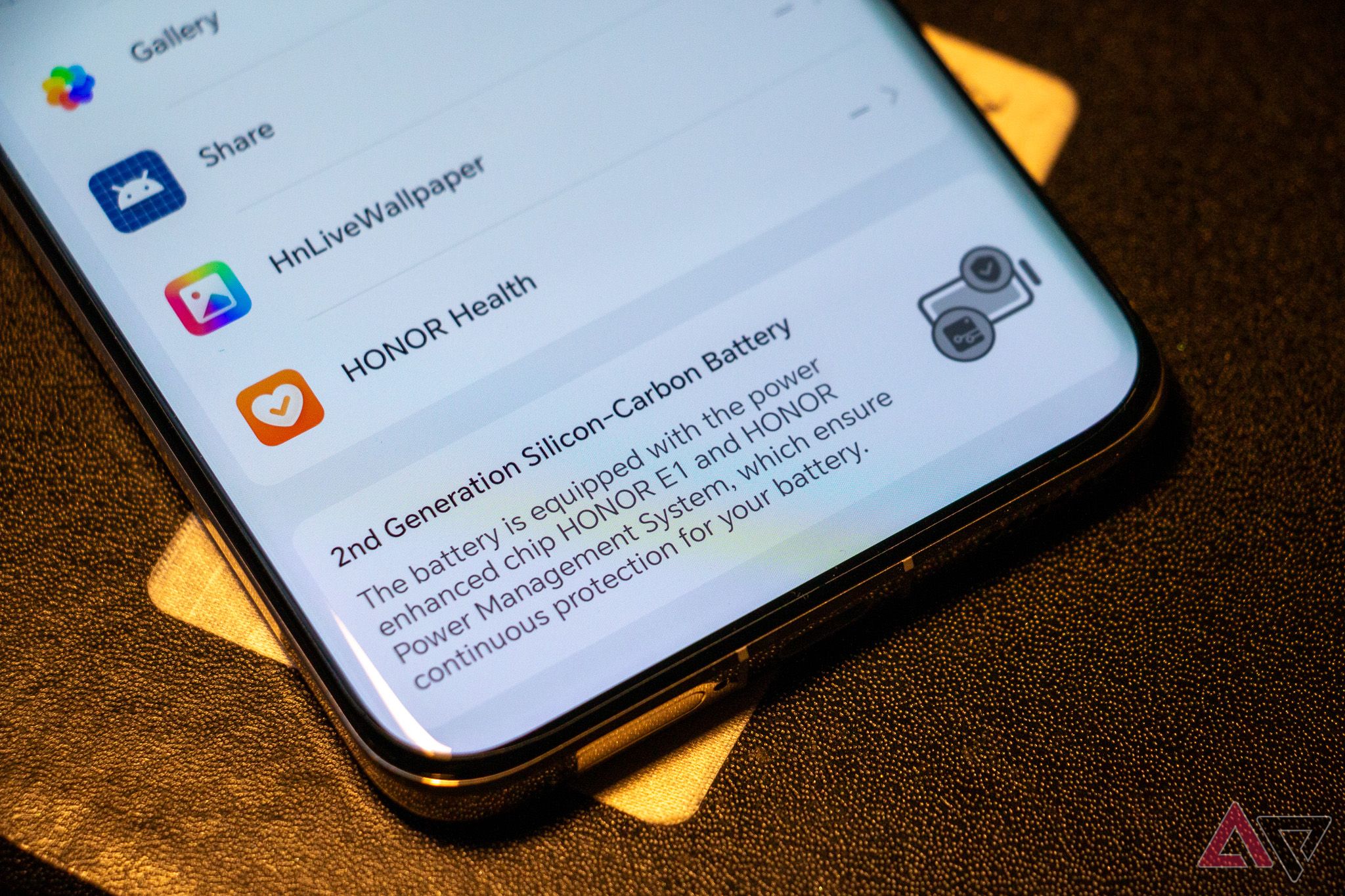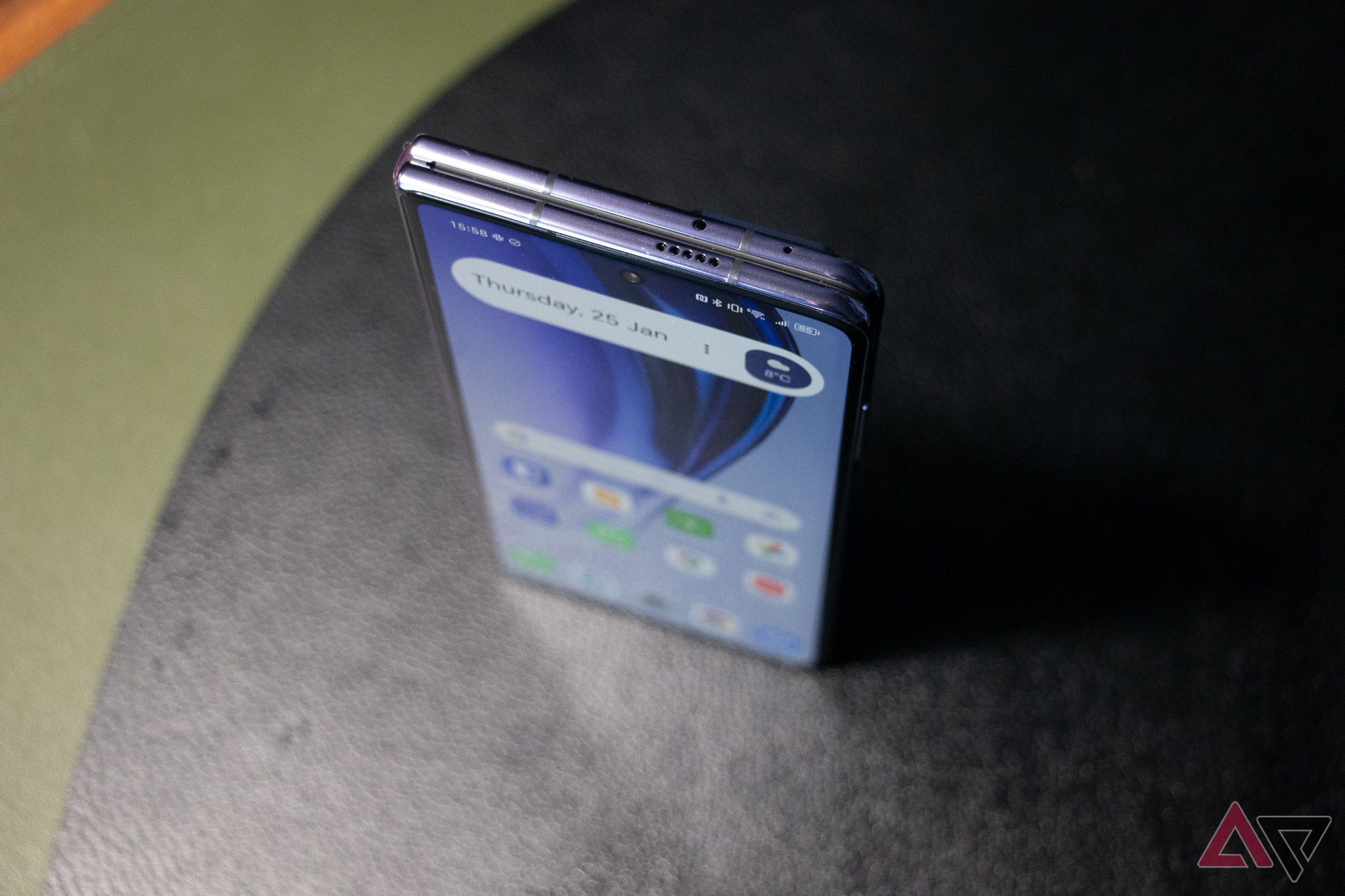Lithium-ion batteries have powered the best smartphones, laptops, tablets, and EVs for more than the past decade. While they currently offer some of the best compromises when it comes to energy density, security, durability, and efficiency, they’re far from the holy grail. They need a certain temperature range to operate well and without excessive degradation, and they don’t pack terribly much energy per gram. That’s where Honor’s new silicon-based anode comes in, which solves a few of these problems quite elegantly.
Before we dive in, let’s be clear that Honor’s custom battery is still a lithium-ion battery. The thing the company changed is the anode, which typically uses graphite, a thin carbon structure layered on top of a copper foil. Like many other companies found out already, among them EV maker Tesla, switching graphite out for silicon increases energy density and the range of the operating temperature.
If energy density is the only concern, Honor says that pure silicon anodes would be ideal. The company claims that the material offers a theoretical capacity of 3,579mAh per gram rather than 372mAh in the case of graphite. However, there are challenges with silicon’s excessive expansion rate of up to 300%, which would make it dangerous in a consumer product. The material also degrades faster than the familiar lithium-ion compound, making this kind of battery wholly unsuitable for phones.
Iterating on the lithium-ion battery bit by bit
Honor went for the second-best thing and created a silicon carbon anode. It still uses graphite as a key component, but Honor added in silicon, creating a stable chemical structure consisting of both materials. The company first introduced this kind of battery in the Magic 5 Pro, but back then, the new material was restricted to Chinese models only, with the international version sporting a regular lithium-ion battery.

Honor Magic 6 Pro
The Honor Magic 6 Pro looks like an absolute beast on paper, and it has a special battery at its core. Its silicon-based anode makes it possible to pack more energy in the same volume and increases its resilience against cold.
- SoC
- Snapdragon 8 Gen 3
- RAM
- 12, 16GB
- Storage
- 256, 512GB, 1TB
- Battery
- 5,600mAh
- Ports
- USB-C 3.1
- Operating System
- Android 14 / MagicOS 8
- Front camera
- 50MP
- Rear camera
- 50MP main, 180MP periscope zoom, 50MP ultrawide
- Connectivity
- Wi-Fi 7, Bluetooth 5.3, NFC, infrared
- Dimensions
- 162.5 x 75.8 x 8.9mm
- Display type
- LTPO OLED, 1600 nits, 120Hz
- Weight
- 225g
- Charge speed
- 80W wired, 66W wireless, 5W reversed wireless
- IP Rating
- IP68
- Display dimensions
- 19.5:9, 6.8-inches
- Display resolution
- 1280×2800
The Honor Magic 6 Pro steps things up with the second generation of the battery, which adds a new E1 control chip that’s supposed to account for cold weather better, giving a more accurate charge level estimate than other phones. That’s on top of the regular duties of a chip like that, such as power management. Thanks to the increased energy density, the Magic 6 Pro also sports a 5,600mAh battery, which is significantly more than what you find in competing phones that come in similar sizes. At the same time, Honor managed to add 80W fast charging to the battery without making the phone excessively hot when it’s going from 0 to 100 in less than 40 minutes.
The silicon carbon battery passes the everyday life test
So far, the Honor Magic 6 Pro has only been introduced in China, with the global launch scheduled for February 25 at MWC 2024. As such, we don’t know if the Honor Magic 6 Pro’s second generation silicon carbon anode is going global this time around, but you can find it in at least one international product from the company. The Magic V2, Honor’s flagship foldable, takes advantage of the higher energy density of the silicon anode to fit 5,000mAh into its absurdly thin body. While reviewing this phone, I’ve had the pleasure of visiting Sweden’s capital Stockholm in the midst of winter, enjoying freezing temperatures of -15 degrees Celsius (5 degrees Fahrenheit).
The Honor Magic V2 is impossibly thin
Even in these extreme conditions, the Magic V2 managed to hold its charge. That’s despite me carrying the phone in the outer pocket of my jacket, where it didn’t benefit much from my body’s heat, and extensively using it out in the cold for navigation and photos. I was ready to see the phone shut down prematurely, like many handsets do in the cold, but it didn’t disappoint in this area at all.
With climate change an unfortunate reality, the question is whether we need our phones to battle the cold much better than they already do. A problem that particularly affects batteries’ long-term durability is heat, which is also a limiting factor for the processor and other components. Honor hasn’t talked much about heat mitigation in its silicon-based battery, and the question remains if the silicon carbon battery holds up any better than regular graphite designs under the scorching summer sun.
Source link




